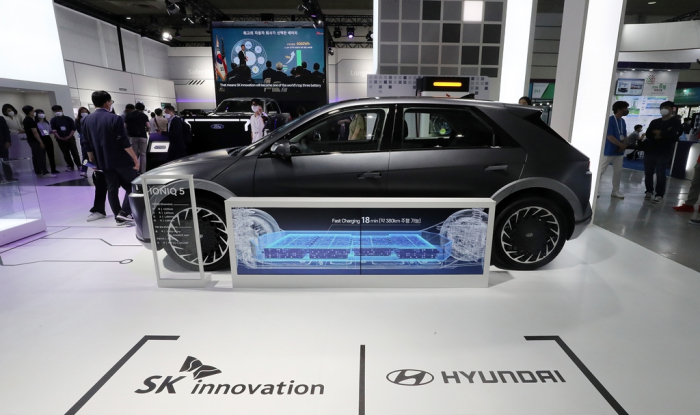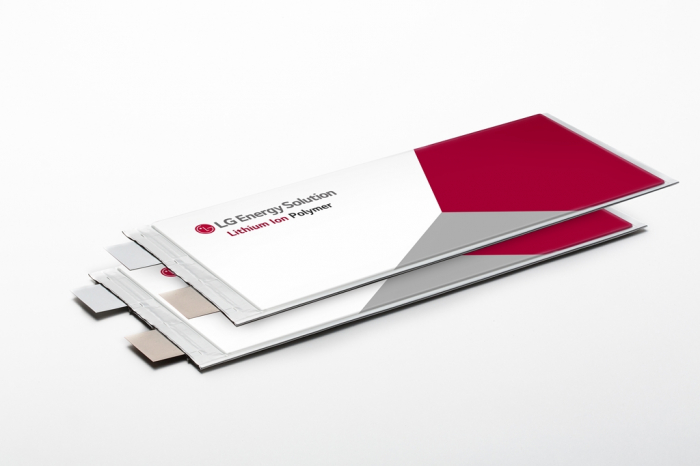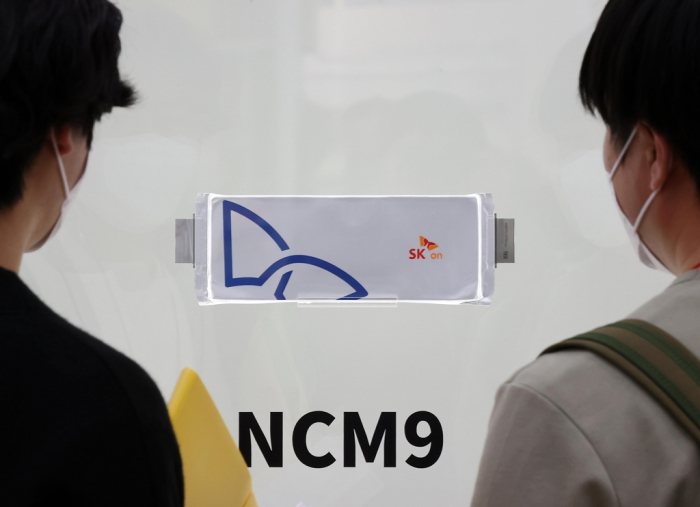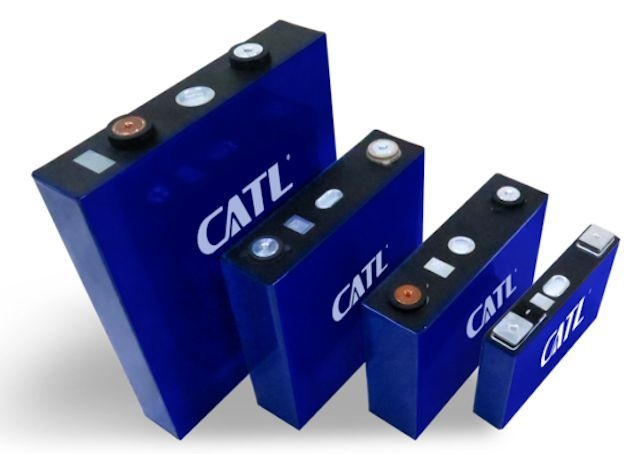Falling nickel prices: A boon for Korean battery makers over Chinese rivals
Chinese electric vehicle makers are also increasing the use of NCM batteries as nickel prices fall
By Jun 21, 2022 (Gmt+09:00)
LG Chem to sell water filter business to Glenwood PE for $692 million


Kyobo Life poised to buy Japan’s SBI Group-owned savings bank


KT&G eyes overseas M&A after rejecting activist fund's offer


StockX in merger talks with Naver’s online reseller Kream


Mirae Asset to be named Korea Post’s core real estate fund operator



South Korea’s three battery players – LG Energy Solution Ltd., SK On Co. and Samsung SDI Co. – are getting a tailwind from the falling prices of nickel, a key raw material for batteries, as they can better compete with Chinese rivals.
According to data from the Korea Resources Corp., nickel prices averaged $28,055 a ton as of Monday, down 35% from $42,995 in March.
Nickel prices have been declining as a global economic slowdown coupled with rising inflation is cooling demand from construction companies in China for use in stainless steel, industry watchers said.
Chinese smelters, forced to shut their plants due to the resurgence of the COVID-19 pandemic, are also cutting back on the use of nickel, contributing to the price fall of the metal.
“Any significant recovery in China’s real estate market isn’t likely in the near future, meaning nickel prices will remain stable for a considerable period of time,” said Kim Kwang-rae, a Samsung Securities analyst.
Stainless steel and other industrial use account for more than two-thirds of nickel consumption, while batteries use up to 10% of the metal mined and processed for commercial use.

NARROWING PRICE GAP
The Korean Big Three, the world’s main producers of nickel-cobalt-manganese (NCM) batteries, have been cornered by the increasing adoption worldwide of lithium iron phosphate (LFP) batteries, largely produced by Chinese companies, as such batteries are lower in energy density but relatively cheaper to make.
As prices of nickel and other raw materials surged earlier this year, Chinese companies such as Contemporary Amperex Technology Co. Ltd. (CATL), the world’s top battery maker, and BYD enjoyed price competitiveness over their Korean rivals.
Korean companies were also battered by Tesla Inc.’s decision last October that it will install LFP batteries in all of its standard-range electric vehicles to cut costs.
However, the nickel price fall in recent months has narrowed the price gap between NCM batteries and LFP ones to close to 10 percentage points from a high of 26 percentage points last November, according to industry officials.

Adding to the difficulties of Chinese battery makers, the price of lithium, a key material for LFP batteries, rose to 472.5 yuan per kilogram as of March 16, up sharply from 224.5 yuan in mid-December of last year. Lithium prices are hovering around 457.5 yuan this week.
The price of lithium, a key material used for the positive end of a lithium-ion battery, known as the cathode, is set in the Chinese yuan, not the US dollar, in the global market as Chinese makers are dominant players.
Korea’s NCM battery makers also use lithium, but much less than LFP battery makers.
CHINA LOOKS TO NCM BATTERIES
Korean companies prefer high-nickel batteries with 80% or higher nickel content, offering longer mileage and shorter charging time than low-nickel content batteries.
LG Energy, the world’s second-largest battery maker, supplies high-nickel batteries made of nickel, cobalt, manganese and aluminum (NCMA) to its clients, including General Motors Co., while Samsung SDI supplies its Gen 5 Li-ion battery to BMW and other global carmakers.

SK On, an affiliate of SK Innovation Co., is producing the NCM9 battery with the world’s highest nickel content of 90% and supplies it to Ford Motor Co.
With the easing prices of nickel, Chinese automakers are also increasing their use of NCM batteries.
According to China’s industry ministry, the portion of the country’s electric cars equipped with NCM batteries has risen to 55% from 23% in March of last year.
China has been fostering the LFP battery industry, providing subsidies to its battery makers for technology development and raw material procurement.
“CATL is expanding its NCM battery business but its technology is far behind that of Korean companies,” said Samsung Securities analyst Joung Haneul.
Write to Hyung-Kyu Kim and Han-Shin Park at khk@hankyung.com
In-Soo Nam edited this article.
-
 BatteriesSamsung SDI to develop cylindrical batteries for Tesla, other EV makers
BatteriesSamsung SDI to develop cylindrical batteries for Tesla, other EV makersJun 16, 2022 (Gmt+09:00)
3 Min read -
 BatteriesLG Energy, SK On to add prismatic types to EV cell lineups
BatteriesLG Energy, SK On to add prismatic types to EV cell lineupsMay 17, 2022 (Gmt+09:00)
3 Min read -
 BatteriesChina’s tighter grip on minerals boosts costs for Korean battery makers
BatteriesChina’s tighter grip on minerals boosts costs for Korean battery makersApr 12, 2022 (Gmt+09:00)
4 Min read -
 BatteriesKorea’s battery trio cornered by Chinese rivals’ overseas advance
BatteriesKorea’s battery trio cornered by Chinese rivals’ overseas advanceApr 04, 2022 (Gmt+09:00)
4 Min read -
 EV BatteriesTesla’s shift to LFP cells to shake global battery industry
EV BatteriesTesla’s shift to LFP cells to shake global battery industryOct 22, 2021 (Gmt+09:00)
3 Min read -
 BatteriesLG Chem beats CATL, Panasonic to supply batteries for Tesla’s Model Y SUV
BatteriesLG Chem beats CATL, Panasonic to supply batteries for Tesla’s Model Y SUVNov 20, 2020 (Gmt+09:00)
3 Min read


